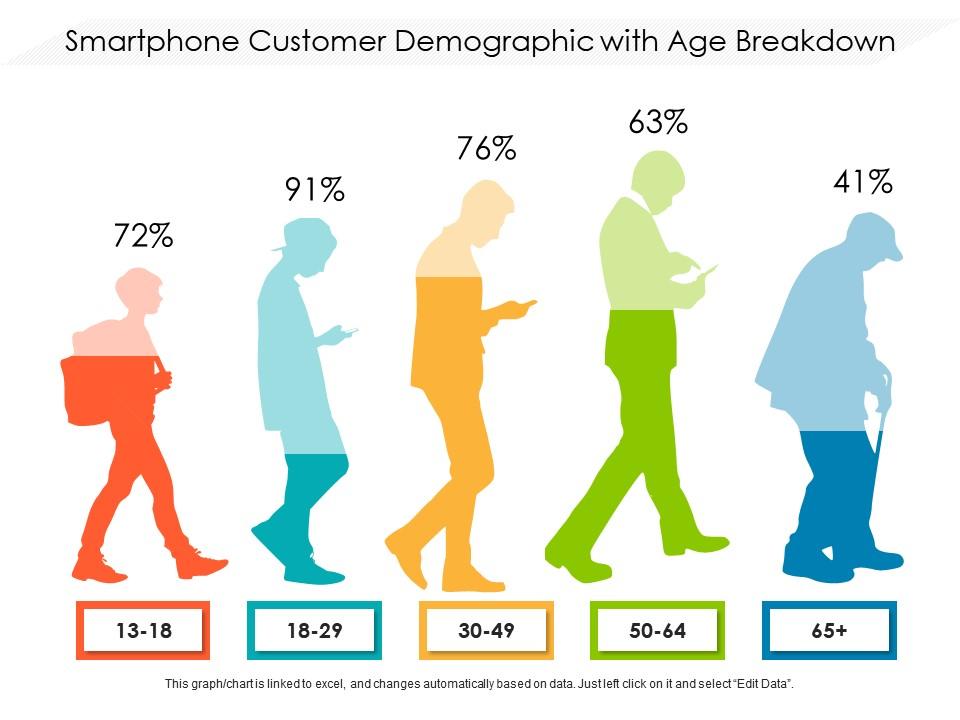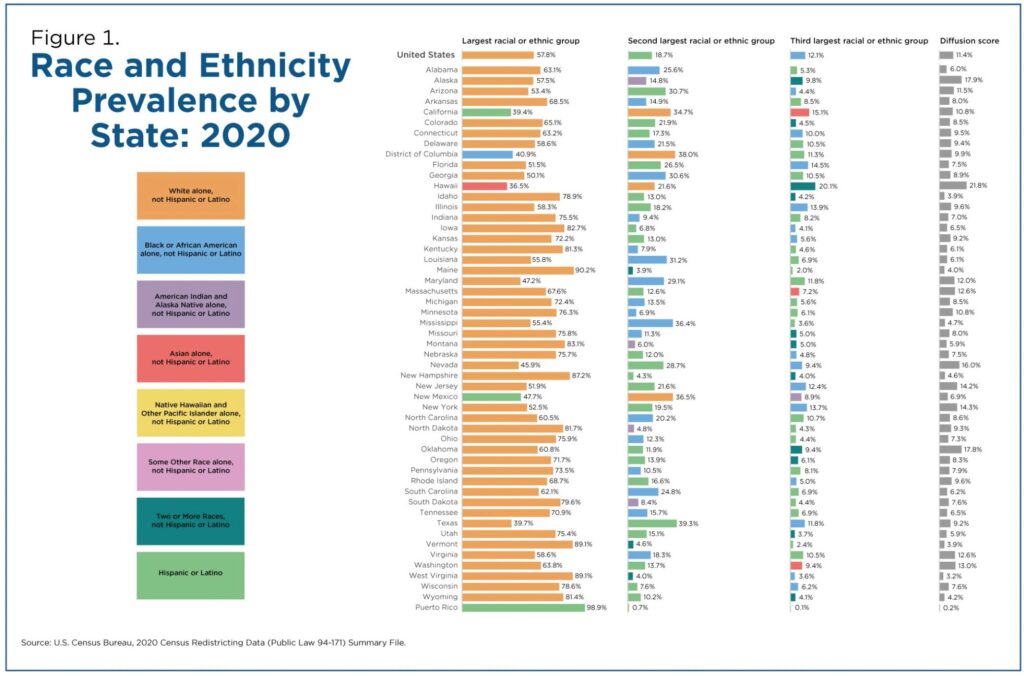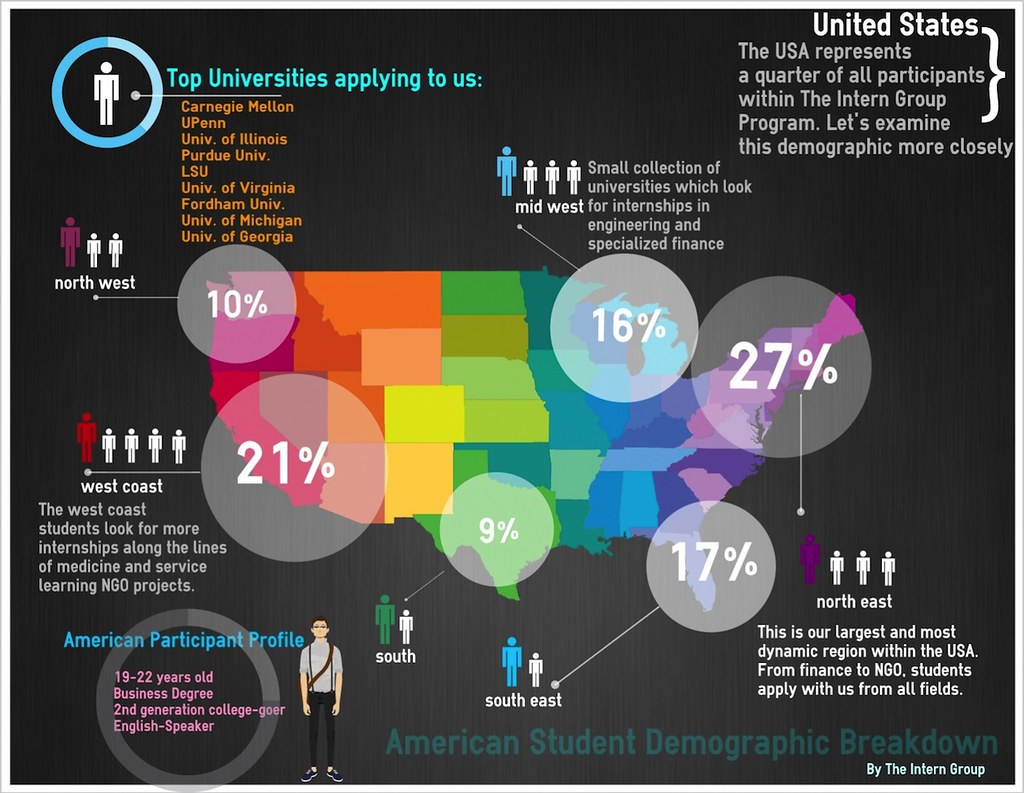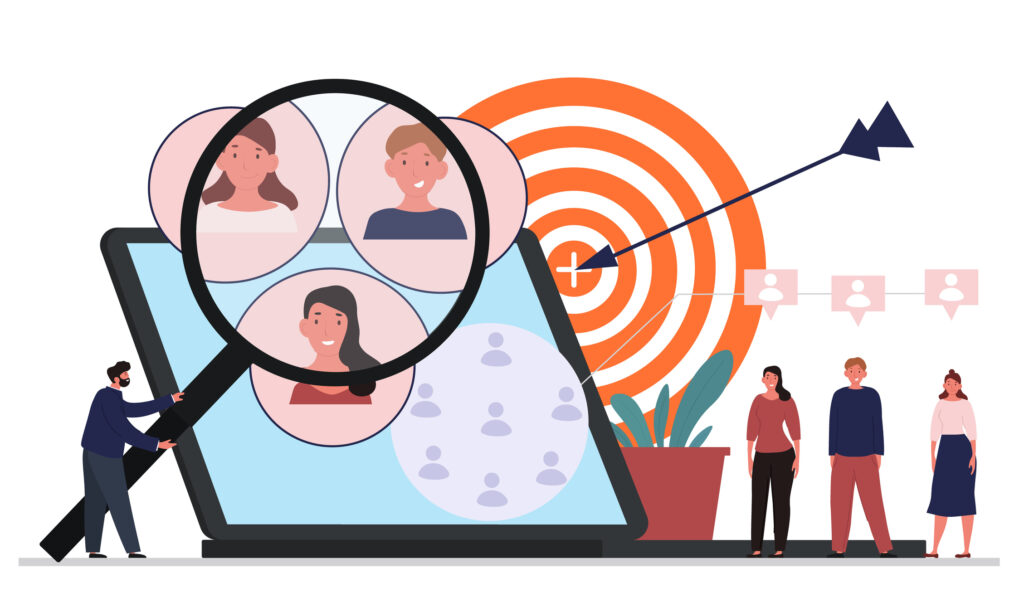
In this blog, we’ll delve into the details of demographics, providing practical insights and actionable strategies to elevate your marketing efforts. Are you prepared to decode the demographics that define your audience? Join us on this enlightening exploration!
In the world of marketing, understanding demographics is like unlocking a treasure chest of insights into consumer behavior and engagement. Demographics, the study of population characteristics, can be a game-changer for businesses aiming to connect with their target market.
Why is Understanding Your Target Audience Important?

Understanding your target audience is crucial because it forms the foundation of effective communication and engagement. By knowing your audience, you can craft messages that resonate with their interests, preferences, and needs, increasing the likelihood of capturing their attention. This knowledge allows you to position your products or services as solutions that address specific challenges or desires of your audience, making them more relevant. Additionally, it enables you to utilize resources more efficiently by focusing on channels and strategies that are most effective for your specific audience, maximizing your return on investment. Knowing your audience also allows you to build a connection on a personal level, fostering brand loyalty and trust.

Moreover, understanding demographic breakdowns and behavioral patterns helps you adapt to changes in the market, staying ahead of trends and shifts in consumer preferences. In essence, it’s not just about demographics; it’s about creating meaningful connections, delivering value, and ultimately, building a successful and sustainable relationship with your customers.
Demographic Data: The Blueprint of Your Audience

Demographic data is the cornerstone, offering a comprehensive view of age demographics, income distribution, and even population breakdown by race. Dive into the numbers to discover the essence of your audience.
Demographic data refers to information about a population, commonly categorized based on various characteristics such as age, gender, income, education, ethnicity, and more. It provides a statistical overview of the composition and traits of a group, allowing businesses, researchers, and policymakers to understand and analyze specific segments of a population. Demographic data is instrumental in market research, as it helps in identifying target audiences, tailoring marketing strategies, and making informed decisions by considering the characteristics and behaviors of the people involved.
Demographic Breakdown: Navigating Diversity

Demographic breakdown involves the diverse characteristics within a population, shedding light on the varied elements that make up a community. It’s not just about looking at overall numbers but understanding the intricacies of different demographics, such as age, gender, ethnicity, income, and more.
Demographic breakdown is akin to exploring individuals with unique attributes. By delving into this breakdown:
Inclusivity: It helps embrace the diversity present within a population, recognizing and acknowledging the varied backgrounds, experiences, and perspectives.
Targeted Outreach: Allows for targeted and relevant outreach strategies, acknowledging the specific needs and preferences of different demographic groups.
Cultural Sensitivity: Promotes cultural sensitivity by understanding the nuances of different communities, avoiding stereotypes, and fostering respectful communication.
Market Adaptation: Enables businesses to adapt their products, services, and marketing approaches to cater to the diverse demands of their audience.
Equitable Representation: Encourages equitable representation in various aspects, from employment opportunities to marketing materials, fostering a sense of inclusion.
Demographic Breakdown VS Demographic Data

Demographic breakdown and demographic data are related concepts but refer to different aspects.
• Demographic Data: This term encompasses the actual information and statistics collected about a population, often categorized by characteristics such as age, gender, income, education, ethnicity, and more. Demographic data provides a quantitative overview of the composition of a group.
• Demographic Breakdown: This phrase refers to the analysis or dissection of the demographic data to understand the specific details and nuances within each category. It involves exploring the diversity and variations present within different demographic segments.
In short, demographic data is the raw information collected, while demographic breakdown involves a more in-depth examination and interpretation of that data to gain insights into the specific characteristics and differences within each demographic category.
Behavioral Science and the Art of Engagement

Behavioral science is the study of how people make decisions and behave in various situations. When applied to the art of engagement, it becomes a powerful tool for understanding and influencing consumer behavior. By delving into the principles of behavioral science, businesses can gain insights into the psychology behind human behavior, enabling them to create more effective strategies for engaging their audience.

Understanding factors such as attitudes, motivations, and decision-making processes allows businesses to tailor their communication and marketing efforts to resonate with their target audience. Whether it’s designing user-friendly interfaces, crafting persuasive messaging, or optimizing customer experiences, behavioral science provides a framework to enhance engagement by aligning strategies with the way people naturally think and act.
In essence, the art of engagement through behavioral science involves leveraging psychological insights to connect with consumers on a deeper level, making interactions more meaningful and increasing the likelihood of desired actions, such as purchasing a product or engaging with a brand.
Studying Consumer Behavior

Examining the consumer behavior physiology of customers is essential for every company for several compelling reasons. Firstly, understanding the physiological aspects of consumer behavior provides insights into how individuals respond to stimuli, make decisions, and interact with products or services.
By delving into the details of consumer behavior physiology, companies can:
- Enhance Product Design: Creating products or services to align with the physiological preferences and responses of customers ensures better user experiences and satisfaction.
- Enhance Marketing Strategies: Knowing how consumers physiologically react to various marketing stimuli (such as colors, sounds, or visuals) enables companies to craft more effective and appealing advertising campaigns.
- Improve Customer Experience: By considering the physiological aspects of customer behavior, companies can create environments, both online and offline, that enhance comfort, ease, and overall satisfaction.
- Increase Brand Loyalty: A deeper understanding of how physiological factors influence consumer choices allows companies to build stronger connections with their audience, fostering brand loyalty and repeat business.
- Innovate with Insight: Companies can use insights from consumer behavior physiology to innovate in product development, introducing features or designs that align with customers’ natural responses and preferences.
- Personalize Offerings: Personalization becomes more accurate when based on an understanding of how individual customers physiologically engage with products or services, leading to more targeted and effective offerings.
Audience Segmentation: Precision in Marketing
Audience segmentation in marketing is the strategic process of dividing a target audience into distinct groups based on shared characteristics, preferences, and behaviors. This precision-oriented approach allows marketers to tailor their strategies to specific segments, increasing the effectiveness of their campaigns.
By dissecting the target audience into smaller, more homogeneous groups, marketers can create highly targeted and personalized messages. This not only improves the relevance of marketing efforts but also enhances the likelihood of resonating with the unique needs and interests of each segment.
Audience segmentation involves careful consideration of demographics, psychographics, and behavioral patterns. Understanding these nuances enables marketers to craft messages that speak directly to the motivations and preferences of each segment, ultimately driving engagement and conversion.
In essence, audience segmentation is the art of precision in marketing, offering a more refined and efficient way to connect with diverse groups within a larger audience. This tailored approach can lead to increased customer satisfaction, improved brand loyalty, and a higher return on marketing investment.
Device Type and Its Influence

In an era dominated by technology, understanding device types is crucial. Understanding device types and their influence is crucial in modern day time, where technology plays a pivotal role in consumer interactions. “Device type” refers to the various electronic gadgets and platforms people use, such as smartphones, tablets, desktop computers, or smart TVs. The influence of device types on consumer behavior lies in their unique characteristics. For instance, smartphones are often associated with on-the-go and quick interactions, while desktops may be linked to more focused and in-depth activities. Knowing the prevalent device preferences within your target audience enables businesses to tailor their online presence, user interfaces, and content to optimize the user experience.
Considering device types is essential for responsive web design, app development, and digital marketing strategies. Adapting to the specific nuances of each device ensures that your brand message is effectively delivered across diverse platforms, resonating with users in various contexts. In summary, recognizing device types and their influence empowers businesses to align their digital strategies with user behaviors, creating a seamless and engaging experience across different devices and platforms.
Case Study: Target Market Analysis in Action
A case study illustrating target market analysis in action provides a practical glimpse into how businesses can effectively navigate and capitalize on their specific demographic landscape. This involves a thorough examination of the market, consumer behavior, and key factors that influence purchasing decisions.
In a target market analysis case study, you would typically explore:
Demographic Insights: Understanding the age, income levels, and other demographic details of the target audience.
Consumer Behavior: Delving into the behavioral patterns and preferences that drive consumer choices within the target market.
Competitor Landscape: Examining competitors in the same market space to identify strengths, weaknesses, opportunities, and threats.
Strategic Decision-Making: Showcasing how the insights gained from the analysis informed strategic decisions, such as product development, pricing strategies, or marketing campaigns.
Outcome and Impact: Detailing the outcomes of the targeted approach and assessing its impact on market share, customer satisfaction, and overall business success.
By presenting a real-world example, a case study demonstrates the tangible benefits of conducting a thorough target market analysis. It serves as a valuable learning tool for businesses looking to refine their strategies and make informed decisions based on a deep understanding of their specific market and audience.
Audience Marketing: Beyond the Basics

Think of audience marketing beyond the basics as moving from the standard playbook to a more advanced strategy. It’s like shifting from broad strokes to fine-tuned details in connecting with your audience. Imagine going from a one-size-fits-all approach to tailoring your messages like a personalized experience, using insights into your audience’s behaviors and interests. It’s the difference between just knowing demographics and diving into the specifics that make each person unique – almost like moving from a basic map to a GPS that guides you through the twists and turns of your audience’s journey. This advanced approach is all about staying one step ahead, predicting trends, and building lasting connections in today’s dynamic market.
In this advanced approach to audience marketing:
Personalization: Tailoring content, messages, and experiences to individual preferences within your target audience, creating a more intimate connection.
Behavioral Insights: Utilizing data on consumer behavior to predict and understand patterns, allowing for anticipatory responses and more effective engagement strategies.
Multi-Channel Integration: Implementing seamless and consistent messaging across various channels to provide a cohesive experience, recognizing that audiences interact through multiple platforms.
Advanced Segmentation: Going beyond demographic segmentation to consider psychographics, interests, and other nuanced factors that influence consumer decisions.
Lifecycle Marketing: Addressing consumers at different stages of their journey with the brand, ensuring relevance and continuity throughout their experience.
Predictive Analytics: Leveraging data-driven insights to anticipate future trends, behaviors, and market shifts, allowing for proactive and strategic decision-making.
Target Groups: More Than Just Statistics

Uncover the significance of target groups. Understanding target groups goes beyond viewing them as mere statistics; it involves recognizing the unique individuals and diverse characteristics within these segments. Target groups represent real people with distinct needs, preferences, and behaviors. It’s about delving into the human aspect behind the data, acknowledging the nuances that make each group special. By shifting the perspective from numbers to individuals, businesses can tailor their strategies to resonate on a personal level. This approach fosters a deeper connection, allowing companies to address the specific concerns and aspirations of their target groups. In essence, target groups are more than statistical entities – they embody the rich diversity and humanity that define the market.
The Engagement Puzzle: Putting It All Together

Finally, piece together the insights gained from demographics, behavioral science, and audience segmentation. Witness how this holistic understanding transforms the engagement game, making your brand resonate with your specific audience.
The engagement puzzle involves integrating the insights obtained and putting it into a cohesive strategy. It’s about assembling a complete picture of your audience by combining the data on who they are (demographics), understanding how they behave (behavioral science), and categorizing them into meaningful groups (audience segmentation).
When these pieces are interconnected, a holistic understanding emerges, allowing businesses to create more targeted and effective engagement strategies. It’s not just about demographics or behavioral patterns in isolation; it’s about recognizing the synergies between these elements. Witnessing this transformative process reveals how a brand can authentically connect with its specific audience. By aligning messaging, experiences, and products with the intricate details of your audience, the engagement puzzle comes together, creating resonance and meaningful connections that go beyond traditional marketing approaches.
To everyone commencing on this journey of understanding the complexities of demographics, behavioral science, and audience segmentation – best of luck! May your efforts in unraveling the nuances of the engagement puzzle be met with insightful discoveries and transformative strategies. Approach each aspect with curiosity and dedication, knowing that a comprehensive understanding will empower your brand to resonate authentically with your specific audience. Here’s to a successful and rewarding exploration into the dynamic world of audience engagement!